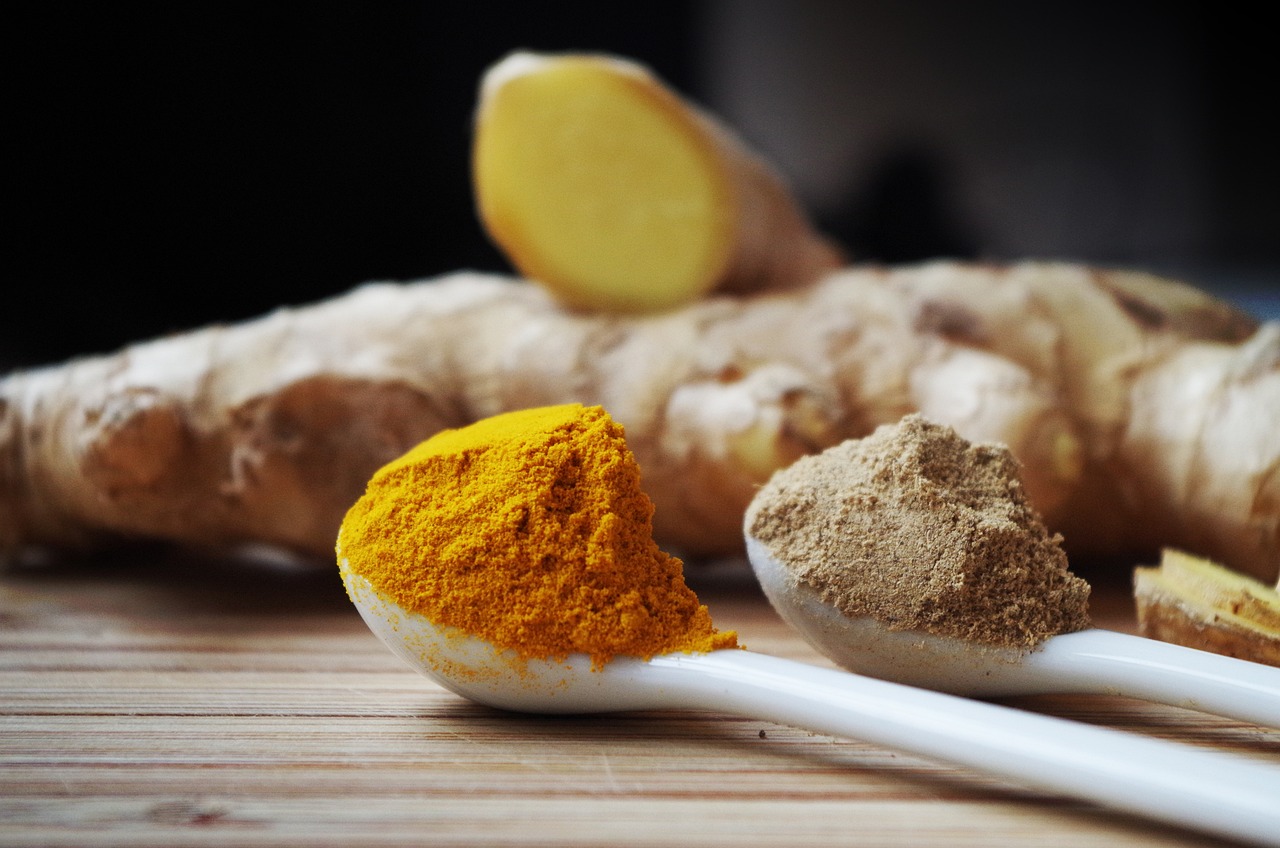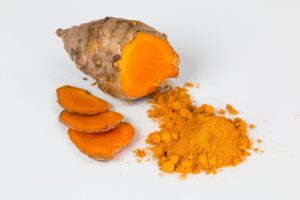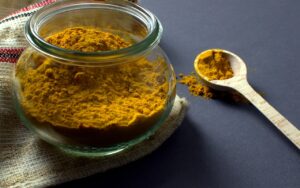Turmeric
Overview
Turmeric, known botanically as Curcuma longa, is a vibrant perennial herb from the ginger family that boasts underground stems called rhizomes. Native to the Indian subcontinent and Southeast Asia, it flourishes in warm, humid climates and is loved for its role as a spice and colorant. Beyond the kitchen, turmeric is celebrated for its potential health benefits, featuring a distinctive deep orange-yellow hue and a pungent, earthy flavor.

Characteristics
Known for its deep orange-yellow rhizomes, widespread use as a spice and dye, and numerous health benefits.
Region
Native to the Indian subcontinent and Southeast Asia; thrives in tropical climates.
Natural Habitat
Typically found in forest margins and open woodland areas.
Cultivation
Prefers warm, humid conditions, indirect sunlight, consistently moist soil, and fertile, well-draining loamy soil.
Uses and Benefits
Turmeric roots, rich in deep orange-yellow hues, bring more than just a splash of color to your meals; they pack a punch of flavor and provide a bounty of health benefits. Whether used fresh or ground into a vibrant spice, these rhizomes weave magic into various cultural dishes, offering a taste that’s both earthy and warming.
The power of turmeric extends beyond the kitchen—as a natural anti-inflammatory and antioxidant, it has gained remarkable recognition in wellness spaces. Enthusiasts celebrate its potential to support digestive health, ease joint pain, and enhance overall health maintenance1 4. Furthermore, the beauty of turmeric leaves doesn’t go unnoticed; in some culinary traditions, they wrap foods, infusing dishes with a subtle, distinctive aroma3. In the realm of holistic approaches, Indian saffron—as turmeric is sometimes known—stands tall, a testament to its golden, healthful glory5.

Cultivation Tips
Growing turmeric may sound exotic, but it’s definitely achievable with the right conditions. Aim for a warm spot—the plant loves temperatures between 68 and 86 °F—and make sure it gets plenty of moisture, mimicking that tropical climate it originates from.
Rich, well-draining soil is another must-have to help your turmeric thrive. In areas with cooler climates, you can still grow this vibrant herb by planting it in containers. This way, you can bring the plants indoors when the weather turns chilly. Remember, turmeric takes around 7 to 10 months to mature, so patience here is as important as your green thumb2 3. Keep the rhizomes partially submerged in the soil for the best growth and, when the leaves start to die down, it’s time to harvest some for your next curry or golden milk4!
Seasonal Considerations
In the realm of seasonal considerations, the resilient turmeric shines during the warmer climes, particularly in summer’s embrace. As the heat intensifies, turmeric’s development is in full swing, resulting in blooming spikes that offer a visual treat in July and August3. This is when you’ll witness the plant reaching its expressive peak.
For those nurturing turmeric, this period marks a time of vigilance to ensure the plant’s needs are met; consistent moisture and warmth are key to sustaining its vibrant growth. Remember, its perennial nature affords it longevity beyond the fleeting summer—it’s a steadfast botanical companion through time3.

Issues and Troubleshooting
Growing turmeric can be rewarding, but like all plants, it has its quirks and challenges. First off, turmeric is a warm-weather lover. If temperatures dip below 18 °C (65 °F), the plant may struggle or even succumb to the cold. Moisture plays a big role too; water is essential but beware of waterlogging – turmeric despises wet feet and could rot if overwatered2.
Remember that while turmeric enjoys sunshine, it doesn’t appreciate harsh, direct light, so aim for a spot with filtered light or partial shade3. If pests drop by, it’s often due to overly wet conditions – keep an eye out for fungal diseases and scale insects4. Nutrient deficiencies will also take a toll on your turmeric, showing up as yellowing leaves when the plant doesn’t receive enough feed3. Navigation through these common issues with informed care will help ensure your turmeric thrives, rewarding you with vibrant roots full of flavor and health benefits.
History and Folklore
Turmeric’s golden hue has unfurled through history, steeped in rich cultural narratives. This vibrant plant is not only rooted in the earth of the Indian subcontinent and Southeast Asia, but also in the tapestry of legend and tradition. For thousands of years, it has graced countless cuisines as a cherished spice and colored the threads of ritualistic garments with its radiant dye. In the annals of folklore, turmeric was often associated with the sun due to its bright color, symbolizing purity and fertility in various ceremonies1. Its esteemed role in Ayurvedic and traditional medicine speaks to a trust in its healing properties, a wisdom passed down through generations. The use of turmeric in both ancient and modern times captures a mosaic of human connection to the earth—a testament to how a simple herb can weave its way into the fabric of our collective history.
References
1. Britannica, “Turmeric | Description, History, & Uses,” https://www.britannica.com/plant/turmeric
2. Wikipedia, “Turmeric,” https://en.wikipedia.org/wiki/Turmeric
3. Epic Gardening, “How to Plant, Grow, and Care For Turmeric,” https://www.epicgardening.com/turmeric/
4. The Spruce, “How to Grow and Care for Turmeric,” https://www.thespruce.com/turmeric-plant-profile-4779812
5. Gardener’s Path, “How to Plant and Grow Turmeric,” https://gardenerspath.com/plants/herbs/growing-turmeric/
Nicolas Duval
Nicolas is a passionate advocate for nature and the art of wildcrafting. His dedication shines through in Wildcraftia, a website he meticulously crafted to serve as a haven for nature enthusiasts worldwide. Driven by a deep appreciation for nature’s connection to humanity, Nicolas embarked on his journey in 2011 with SmokableHerbs, a platform showcasing his love for nature’s bounty. Building upon this foundation, he established Smokably, a thriving online store offering premium herbs and blends to a global audience.
